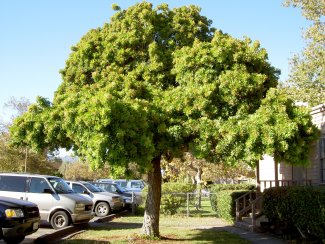Native to subtropical and tropical South America (southeastern Brazil, northern Argentina, and Paraguay).
A sprawling shrub or small tree, with a shallow root system, reaching a height of 7–10 m. The branches can be upright, reclining, or nearly vine-like, all on the same plant. Its plastic morphology allows it to thrive in all kinds of ecosystems: from dunes to swamps, where it grows as a semiaquatic plant
"Florida holly" was introduced to Florida by at latest 1891, probably earlier, where it has spread rapidly since about 1940. Brazilian pepper is widely grown as an ornamental plant in frost-free regions of South America for its foliage and fruit. It is considered as a melliferous flower and is the main source of food for the bee Tetragonisca angustula, which is an important honey producer. Although it is not a true pepper (Piper), its dried drupes are often sold as pink peppercorns, as are the fruits from the related species Schinus molle (Peruvian peppertree). In the United States, it has been introduced to California, Texas, Hawaii, Arizona, Nevada, Louisiana, and Florida. Planted originally as an ornamental outside of its native range, Brazilian pepper has become widespread and is considered an invasive species in many subtropical regions with moderate to high rainfall, including parts or all of Australia, the Bahamas, Bermuda, southern China, Cuba, Fiji, French Polynesia, Guam, Hawaii, Malta, the Marshall Islands, Mauritius, New Caledonia, New Zealand, Norfolk Island, Puerto Rico, Réunion, South Africa, and the United States. In drier areas, such as Israel and southern California, it is also grown, but has not generally proved invasive. In California, it is considered invasive in coastal regions by the California Invasive Plant Council (Wikipedia).
